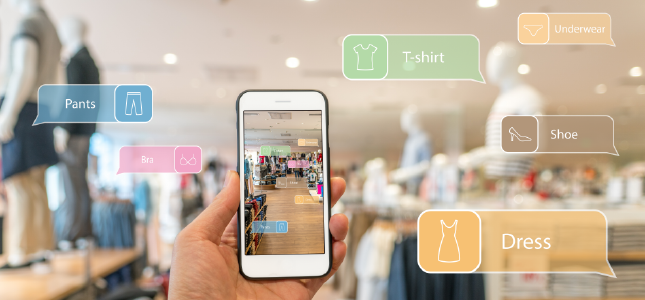In the ongoing race to surpass customer expectations, there are market leaders and laggards. The leaders dominate their competitors in mindshare, number of applications, and perceived value, among other factors. At the same time, these are incredibly tight races and today's laggard could be next month's leader when it comes to captivating customers.
Here are three key technology races-and their respective leaders and laggards-that are poised to have a significant influence on the customer experience.
1. Augmented Reality vs. Virtual Reality
Leader: AR
Laggard: VR
AR and VR technology have both received a lot of media attention for their ability to enhance the customer engagement, but AR is pulling ahead. Why is that? The answer is mundane chores. From an end-user perspective, augmented reality has far more practical applications than virtual reality, which faces a number of obstacles.
For example, at the Consumer Electronic Show (CES), developers demonstrated myriad ways that AR can be used as a self-service tool via a mobile app. We can use it to place virtual furniture in our living room; install a car engine with overlaid instructions; examine virtual merchandise from all angles-the ideas are endless.
Before people can experience the immersive worlds of virtual reality, they need expensive headsets and software. VR is also isolating, which further limits its usefulness. While VR could be valuable for specific purposes-like gaming and training-expect to see more examples of AR designed with a daily user in mind.
2. Smart Home
Leader: Amazon Alexa
Laggard: Google Home
Amazon's Alexa may have lost her voice in a Super Bowl commercial, but the voice-enabled virtual assistant is winning the ecosystem battle. From voice-activated mirrors and toilets to the dishwasher, Alexa already has near-ubiquitous adoption among home devices. Last month, Google announced Google Assistant was compatible with 1,500 smart home devices. Alexa, however, was compatible with more than 4,000 smart home devices.
What does this mean for customer service and customer engagement? Regardless of whether Amazon maintains its lead over Google (or the dark horse, Apple), smart assistants like Alexa and Google Home have huge implications for AI customer service.
Instead of calling the contact center to schedule a repair for the dishwasher, for example, the dishwasher via Alexa might schedule the repair itself or proactively order a part that needs to be replaced. Human associates will still be needed for cases that are too complicated for Alexa to solve, and so companies need to start integrating artificial intelligence with humans in the contact center if they aren't already.
3. User Data
Leader: Telecommunications companies
Laggard: TBA
The Federal Communications Commission voted in December to eliminate net neutrality rules that prohibit Internet service providers from blocking and throttling online traffic. The FCC also lifted a ban on paid prioritization, rules requiring greater disclosure of hidden fees for exceeding data caps, and other consumer protections.
FCC Chairman Ajit Pai was scheduled to speak on a panel at CES but reportedly canceled his appearance due to death threats. Even without Pai admitting it, telecommunications companies now have the upper hand in controlling user data and user experiences.
As internet providers, telecommunication companies are the glue between internet users and publishers. Telco companies like Verizon also own content platforms like AOL and Yahoo that generate ad dollars from the data of internet users.
It remains to be seen how this conflict of interest will play out (will telcos impede the data pipeline of their competitors?) and whether consumers will end up paying more to access certain sites. Corporations and consumer advocates will be keeping a close watch.
And while these are the tech trends/companies that are on top right now, unforeseen factors could easily change the pecking order. Companies that meet the fundamentals-providing fast, convenient services for the right price-will be the ones that consistently pull away from the competition. Stay tuned as we continue to track the rise of consumer technology and the evolution of customer engagement.
Do you agree with these projections? Which tech races are you following?
3 Tech Races that are Shaping the Customer Experience







